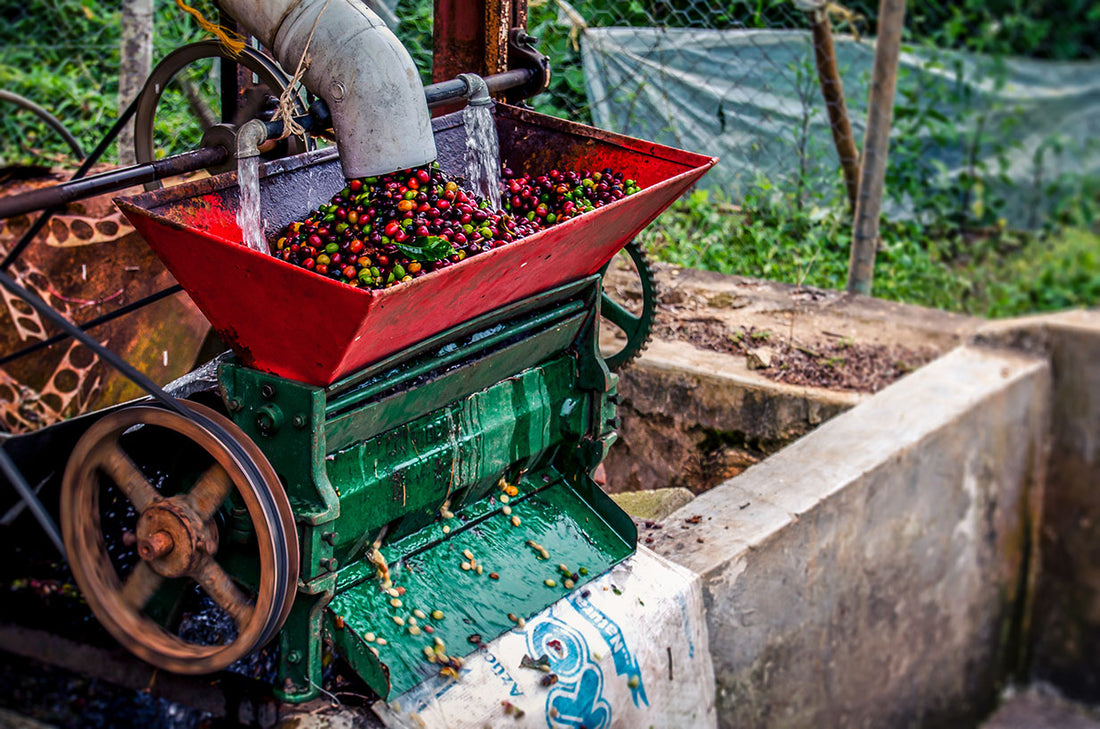
Washed, Natural & Honey: The Processing Behind Costa Rica’s Gourmet Coffee
Share
Costa Rica prides itself on producing some of the best coffee in the world. The combination of nutrient-rich volcanic soil, high altitudes, abundant rainfall, and ample sunshine helps the country yield exceptional coffee beans.
But it’s not just ideal growing conditions that give Costa Rican coffee its distinctive flavor notes - post-harvest processing plays a critical role as well.
The three main methods used are the washed, natural, and honey process, each imparting the beans with unique characteristics that you’ll detect when brewing with the traditional Costa Rican chorreador.
Let's take a look at each method so you have a better appreciation on how different each method is:
The Washed Method: Clean and Bright
The washed method is the oldest and most common way coffee beans are processed in Costa Rica. After the ripe, red coffee cherries are picked, the outer skin and fruit are removed, leaving just the beans.
The beans then go into special washing tanks where they soak and ferment before additional layers are removed. Finally, they are dried in the sun slowly over several days on large cement patios, allowing subtle chemical changes to occur that enhance taste.
When using your classic chorreador to brew washed Costa Rican beans, you’ll immediately notice the clean, bright notes - medium acidity punctuated with sweet fruit flavors like apple, pear, or melon.
This crisp, smooth taste profile comes from beans that had virtually all residue removed through the intensive washing. Expect a transparent cup that brings out the intrinsic character of the bean.
From Tarrazu’s wine notes to Tres Rios’ chocolate hints, washed coffee puts the terroir on display.
The Natural Method: Fruity and Funky
In stark contrast to the washed process is the natural method, where freshly picked cherries are set out to dry immediately with all fruit flesh and mucilage coating left intact.
These sugars, proteins, and acids interact with enzymes in the drying stage, allowing fermentation flavors to develop in ways not possible with washed beans.
Brewing natural process coffee in a chorreador brings out intensely exotic fruitiness - think overripe mango, pineapple, strawberry, or stone fruits paired with a slightly fermented funkiness.
The flavor tends to be heavier-bodied and syrupy sweet compared to the cleaner washed version. While some may find it too much when taken black, others relish the big, fruity hit.
Expect sweet berry notes from Valle de los Santos and juicy plum from Tarrazú when using the natural method.
The Honey Process: A Hybrid Alternative
Straddling washed and natural processing is the honey method - essentially semi-washed beans where some fleshy coating remains after pulping. By leaving residual sticky mucilage on during drying, honey brings qualities of both methods - extra fruit depth without overwhelming acidity or funk.
In the cup with a chorreador, honey process expresses dried fruits like raisin, date, and fig plus milk chocolate more than fresh fruit. The mouthfeel tends to be round, silky, and heavier similar to natural coffee, but the lingering aftertaste stays smooth.
If washed coffee is too tame and natural too overpowering, then honey is that harmonious middle ground. Try high altitude beans from Dota or Póas regions using the honey technique.
Summing Up
Clearly the post-harvest processing Costa Rican coffee growers employ - washed, natural or honey - has tremendous impact on the eventual cup you prepare with your chorreador.
Each imparts signature characteristics from the bright cleanliness of washed, to the ripe funky fruit of natural to the balanced hybrid of honey. Of course, growing conditions make a difference, but don’t underestimate these finishing steps.
Processing allows farmers to showcase smaller regional differences or even personal style that washed coffee alone cannot achieve.
So, the next time you use those beautifully roasted coffee beans in your chorreador don't forget to appreciate how both nature and nurture aligned to give you a tasty cup.
